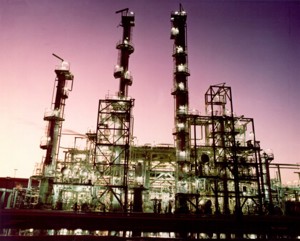Hindustan Petroleum refinery to use Honeywell UOP technology
DES PLAINES, Ill. – Honeywell announced that Hindustan Petroleum Corporation Limited is using technologies from Honeywell UOP for the expansion and modernization of its refinery at Visakhapatnam in Andhra Pradesh on the southeast coast of India.
Included in the project are licensing, basic engineering design and other associated services for a Penex isomerization unit, which helps make cleaner burning high-octane gasoline, and a Unicracking hydrocracking unit to produce cleaner burning diesel fuel.
“HPCL chose these solutions from Honeywell UOP due to their superior economics and our successful track record with these technologies,” said Mike Millard, VP and general manager of Honeywell UOP’s Process Technology and Equipment business. “UOP has licensed more than 160 Penex units, and more than 220 Unicracking units – more than any other licensor in these applications.”
The Penex process upgrades light naphtha feedstock to produce isomerate, a cleaner gasoline blend-stock that does not contain benzene, aromatics or olefins. The process uses Honeywell UOP’s portfolio of isomerization and benzene saturation catalysts.
The Unicracking process uses catalysts, unit design and reactor internals to produce higher yields of cleaner-burning fuels from a wider range of feedstocks. The unit’s fractionation section includes a configuration to more efficiently separate the products, reducing capital costs and significantly lowering utilities and operating expense. In addition, the unit’s heavy polynuclear aromatics management allows the unit to achieve nearly 100% conversion throughout the entire cycle length.
India’s gross domestic product currently is growing at 7% to 8%, driving robust growth in demand for gasoline -- particularly as automobile sales increase – and diesel fuel, driven by growth in commercial and agricultural production. To meet tightening global emissions standards, the Indian government has proposed a 35% reduction in carbon emissions by 2030 by adopting Euro-IV fuel specifications by 2017 and BS-VI (roughly equivalent to the Euro-VI specification) by 2020.







Comments